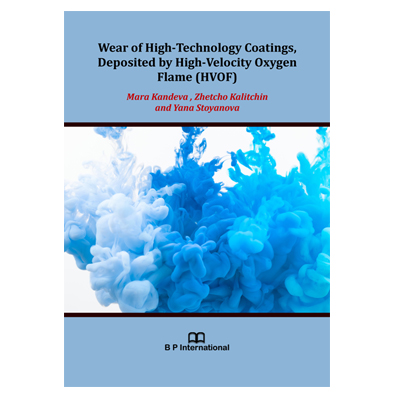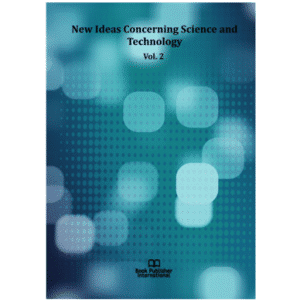The tribology is a fundamental interdisciplinary science and technology for the contacts and the contact interactions in technical systems. The term “contact interactions” (tribological interactions) unites in combination all the phenomena and processes within the zone of touching the bodies, independently of their nature – physical, mechanical, chemical, electrical, thermo-dynamical, acoustical, and technological [1-6]. Carriers of these interactions are regions having specific structures, characteristics, and states, named „contact”. The contacts as objects of the tribology have no analogue in the fields of science. They cannot exist as separate independent physical objects without the presence of the contacting bodies, but they have decisive importance to the functional characteristics of the contacting systems. It is for this reason the contacts are considered in the tribology as independent functional objects of the systems [7-9].
The basic tribological phenomena and processes are friction, wearing, and lubrication, which determines the exploitation characteristics and resources of the details, the mechanisms, and the machines. The friction to a great extent is connected with energy losses, consuming 30-40% of the energy produced in the world. The wearing is accompanying the process of friction and it leads to losses of material and human resources. It is the reason for the termination of the exploitation process of more than 80% of the details and the machines taken as one whole. Simultaneously with this, friction as a driving process is of essential importance for the functioning of a series of systems such as mechanical brakes, and friction devices, as well as in many technological processes – ignition, welding by friction, and some others. The utilization of the achievements of the contemporary tribology enables decreasing many times the losses arising from friction and decreasing the wearing process in machines, which would lead to economic effectiveness at values ranging from 2 up to 4% of the national income of the developed countries in the world. The object of the tribology is the elaboration and controlling of surface layers, coatings, construction, and lubrication materials having appropriate physicomechanical and mechano-chemical characteristics, which ensure adaptation and optimization of the regime of occurring the tribological interactions in various operational regimes.
The exploitation period of a machine represents the calendar duration of its exploitation until the destruction or loss of its functional indices. The expenses for the repairing work of the machines, the equipment, and the transportation expenses represent in developed countries tens of billions of dollars per year. In the course of the development of the industry, these figures are growing up continuously. The expenses for repair and technical servicing of the machines exceed several times their original prices. The investigations show that for example, for automobiles the expenses for these losses are about 6 times higher, for airplanes – up to 5 times, for the metal processing and wood processing machines – up to 8 times higher. The different machines are repaired a different number of times during their exploitation period, for example, the road construction machines are to be repaired up to 15 times. The greatest wearing degree is for details and functional parts of machines and equipment, which are being exploited in abrasive or aggressive media, as well as details of transportation machines operating, in a dust-contaminated environment. Such fields of exploitation are the following – machines in agriculture, the mining industry, energy production, chemical industry, cement production, and others.
The problem of increasing the life cycle of the machines is connected with the enhancement of the wear resistance of the contacting joints. This is a complicated problem. In most cases, it requires combining high antifriction effectiveness and high wear resistance. The high antifriction effectiveness means a low coefficient of friction, which is achieved by the plasticity of the surface layers, while the high wear resistance implies great resistance of the surface layer against splitting, impact interactions, and vibrations, which is achieved by the higher hardness of the surfaces. Usually, the plastic (the soft) layers have lower hardness, while the layers with great hardness have lower plasticity and high brittleness. The compromise is achieved by precision analysis of the mutual influence of three main groups of factors: working medium – with or without lubricating material, presence of abrasive material, aggressive compounds, etc.; dynamic conditions – velocities, loadings, type of the movement, presence of vibrations; contacting materials – composition, structure, physical-mechanical properties, compatibility [4,10-12].
It is very important to point out the circumstance, that during the exploitation of the machines the tribological processes influence one another and they change the time-space characteristics of the contact, and this in its turn determines its behavior and the functional characteristics of the contacting joints, respectively those of the machines, taken as one whole.
Many years of practice in creating protective layers and coatings of the metals have shown that the highest quality wear-resistant coatings are obtained by using concentrated flows of energy. One can observe in the current literature a large number of developments, in which different aspects are considered for the creation of protective coatings by applying gas-thermal methods and concentrated energy flows [13-17].
The subject of the present book is the essence and the mechanisms of wearing of composite powder coatings, consisting of superalloys, deposited by supersonic flame jet – HVOF (High-Velocity Oxy-Fuel) as a new generation of tribology materials. These coatings have been obtained at the velocity of the flame jet 1000 m/s of powder composites, containing micro-particles of different chemical compositions – nickel, tungsten, boron, silicon, manganese, and others having different content percentages. The coatings have been obtained upon a substrate of steel in two cases – without preliminary thermal treatment of the substrate and with preliminary thermal treatment of the substrate. The wearing process characteristics have been studied – mass wear, wear rate, wearing intensity, absolute and relative wear resistance. It is known that the mechanisms and the dynamics of the wearing process and the wear resistance depend on the conditions of interaction. The tribological behavior of such coatings is of special interest under extreme exploitation conditions– the presence of solid-state particles, high loadings and velocities, impacts and vibrations, high temperatures, presence of aggressive media, vacuum, radioactive irradiation, and others.
The book represents the results of HVOF-coatings for three cases: wearing process during dry abrasive friction over the surface with solid attached abrasive particles (abrasion); erosion wear process under the effect of the air stream, carrying solid abrasive particles (erosion), and wearing process under the influence of vibration normal loading during sliding along the surface having solid attached abrasive particles (vibration-abrasive wear).
The investigations have been carried out in the Center for Tribology at the Faculty for Industrial Technologies (FIT) in the Technical University- Sofia under the leadership of Prof. Ph.D. Mara Kandeva with some already known and other newly elaborated methods and devices.
The results from the studies on supersonic flame coatings were reported at the world congresses in Italy (Torino) and China (Beijing), at the international conferences BALKANTRIB of the Balkan Tribological Association in Turkey, Serbia, Romania, Greece, Bulgaria and they have been published in journals, indexed in Scopus and Web of Science.
The authors express their gratitude for the support from their colleagues, Ph.D. students, and diploma students of the Faculty for Industrial Engineering in the Technical University- Sofia, Prof. Georgi Kostadinov, and Assoc.Prof. Todor Penyashki from the Institute of Soil Science, Agrotechnologies and Plant Protection „N. Pushkarov“, Sofia, Bulgaria, Assoc.Prof. Emilia Asenova from the Society of the Tribology Scientists in Bulgaria, Prof. Viagra Pohidaeva from the University for Mining and Geology „St. Ivan Rilsky“, Sofia, Bulgaria, Prof. Dimiter Karastoyanov from the Institute for Information and Communication Technologies, Bulgarian Academy of Sciences, Sofia, Bulgaria, Prof. Aleksandar Vencl from the Faculty of Mechanical Engineering, University of Belgrade, Belgrade, Serbia, prof. E Zadorozhnaya and Assoc.Prof. I Levanov from the Faculty of Automobile and Tractor, Department of Motor Transport, South Ural State University, 76 Prospekt Lenina, Chelyabinsk, Russia, Assoc.Prof. Petr Svoboda from the Faculty of Mechanical Engineering, Brno University of Technology, Brno, Czech Republic.





